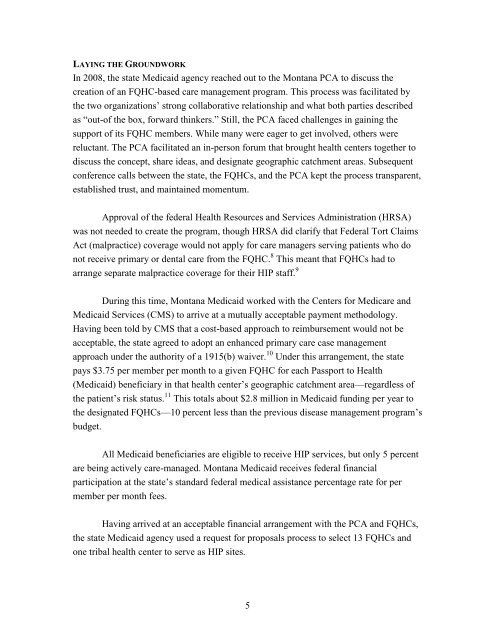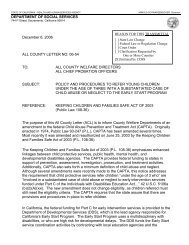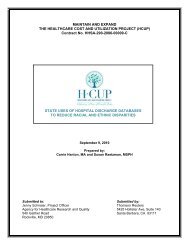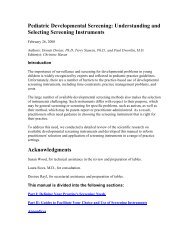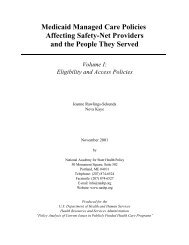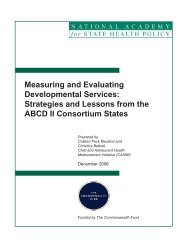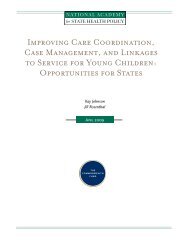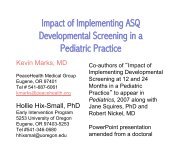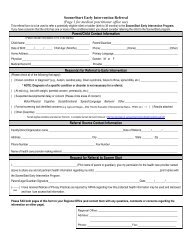Developing Federally Qualified Health Centers into Community ...
Developing Federally Qualified Health Centers into Community ...
Developing Federally Qualified Health Centers into Community ...
You also want an ePaper? Increase the reach of your titles
YUMPU automatically turns print PDFs into web optimized ePapers that Google loves.
LAYING THE GROUNDWORK<br />
In 2008, the state Medicaid agency reached out to the Montana PCA to discuss the<br />
creation of an FQHC-based care management program. This process was facilitated by<br />
the two organizations’ strong collaborative relationship and what both parties described<br />
as ―out-of the box, forward thinkers.‖ Still, the PCA faced challenges in gaining the<br />
support of its FQHC members. While many were eager to get involved, others were<br />
reluctant. The PCA facilitated an in-person forum that brought health centers together to<br />
discuss the concept, share ideas, and designate geographic catchment areas. Subsequent<br />
conference calls between the state, the FQHCs, and the PCA kept the process transparent,<br />
established trust, and maintained momentum.<br />
Approval of the federal <strong>Health</strong> Resources and Services Administration (HRSA)<br />
was not needed to create the program, though HRSA did clarify that Federal Tort Claims<br />
Act (malpractice) coverage would not apply for care managers serving patients who do<br />
not receive primary or dental care from the FQHC. 8 This meant that FQHCs had to<br />
arrange separate malpractice coverage for their HIP staff. 9<br />
During this time, Montana Medicaid worked with the <strong>Centers</strong> for Medicare and<br />
Medicaid Services (CMS) to arrive at a mutually acceptable payment methodology.<br />
Having been told by CMS that a cost-based approach to reimbursement would not be<br />
acceptable, the state agreed to adopt an enhanced primary care case management<br />
approach under the authority of a 1915(b) waiver. 10 Under this arrangement, the state<br />
pays $3.75 per member per month to a given FQHC for each Passport to <strong>Health</strong><br />
(Medicaid) beneficiary in that health center’s geographic catchment area—regardless of<br />
the patient’s risk status. 11 This totals about $2.8 million in Medicaid funding per year to<br />
the designated FQHCs—10 percent less than the previous disease management program’s<br />
budget.<br />
All Medicaid beneficiaries are eligible to receive HIP services, but only 5 percent<br />
are being actively care-managed. Montana Medicaid receives federal financial<br />
participation at the state’s standard federal medical assistance percentage rate for per<br />
member per month fees.<br />
Having arrived at an acceptable financial arrangement with the PCA and FQHCs,<br />
the state Medicaid agency used a request for proposals process to select 13 FQHCs and<br />
one tribal health center to serve as HIP sites.<br />
5


